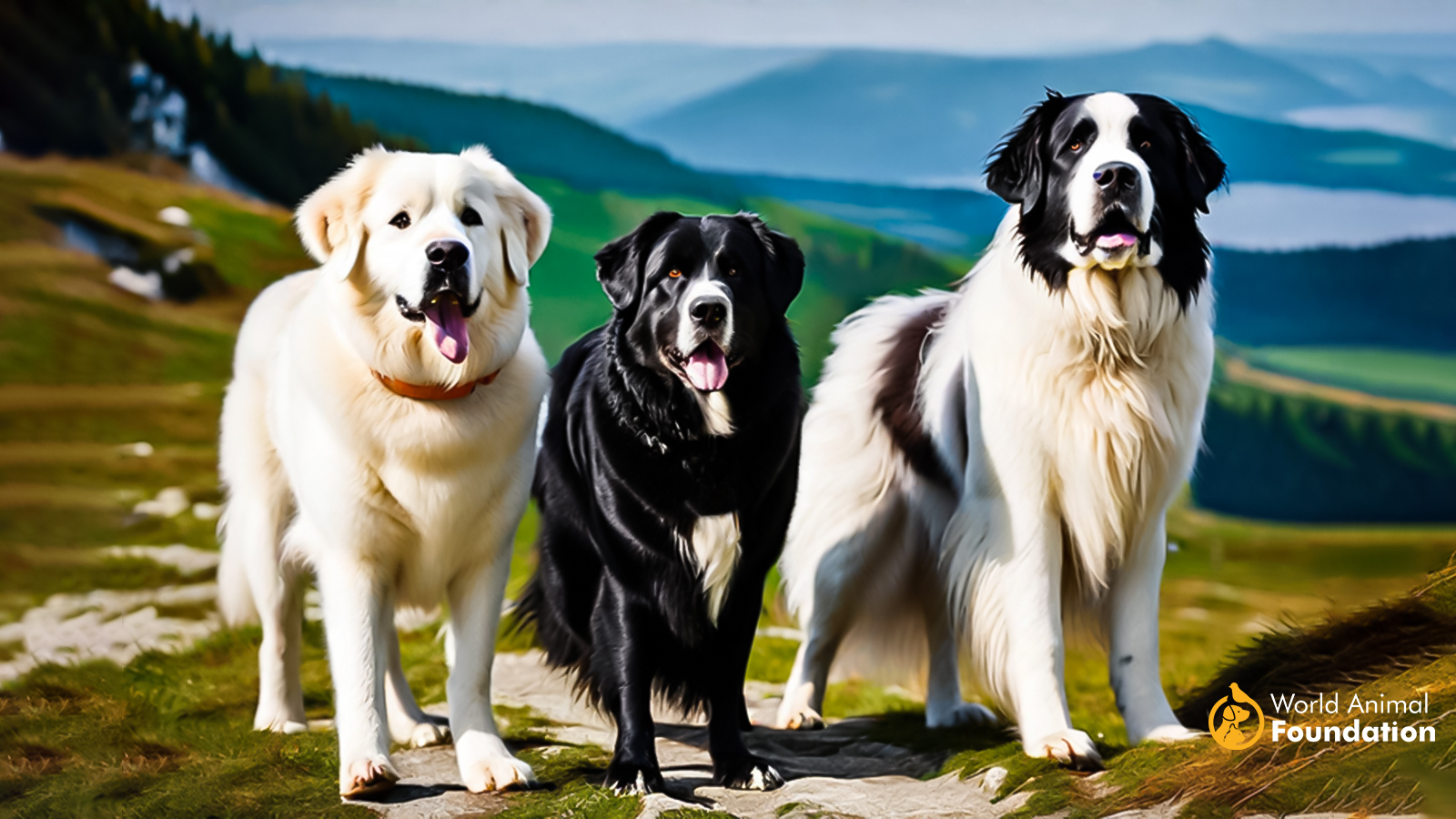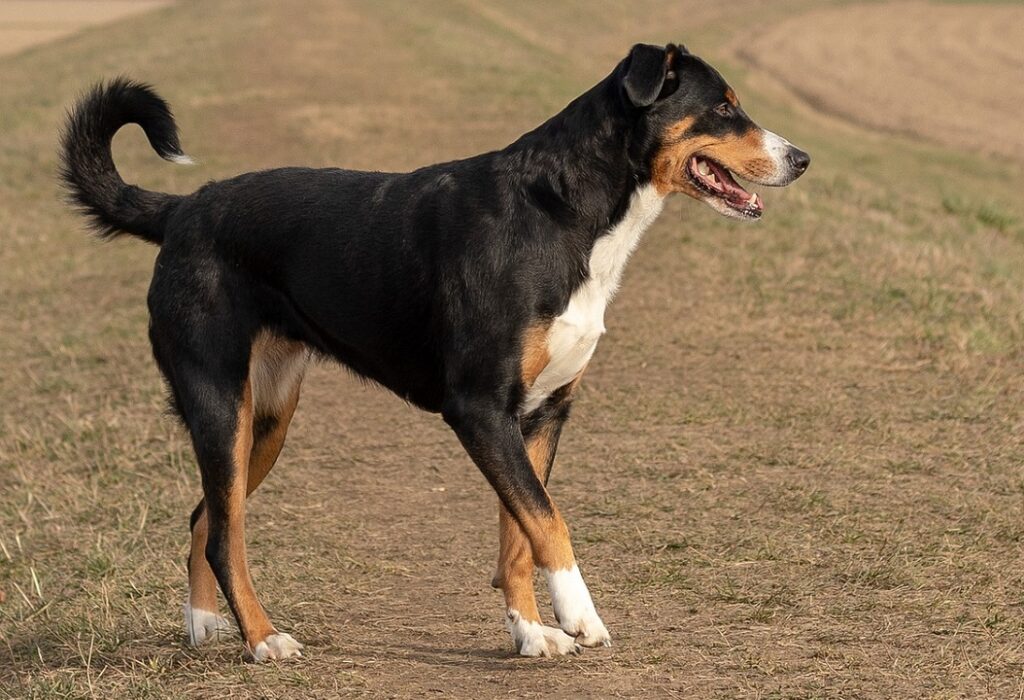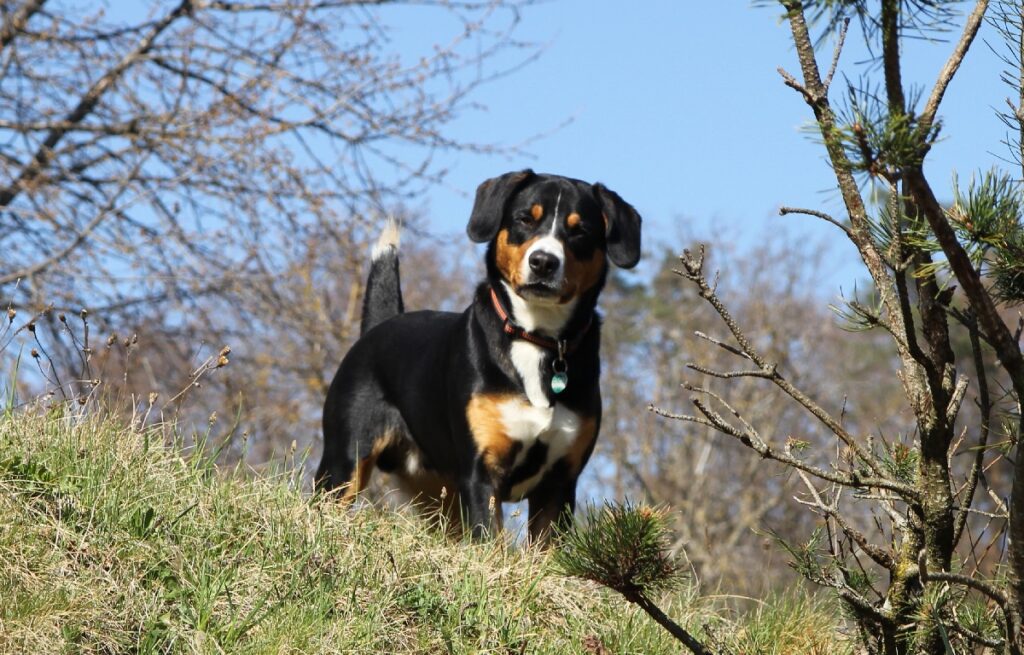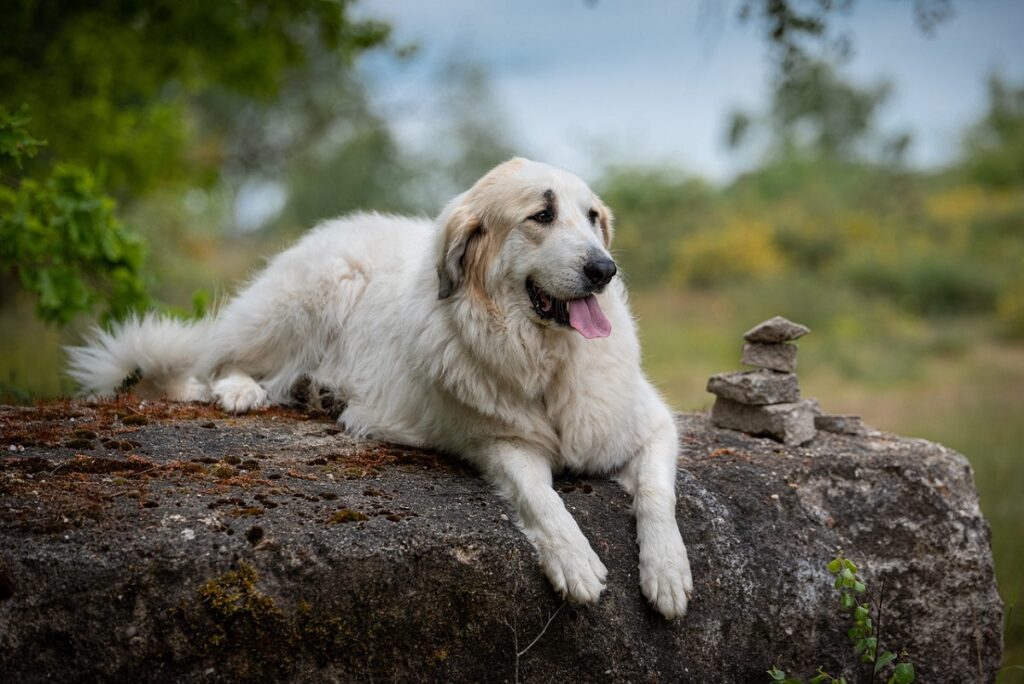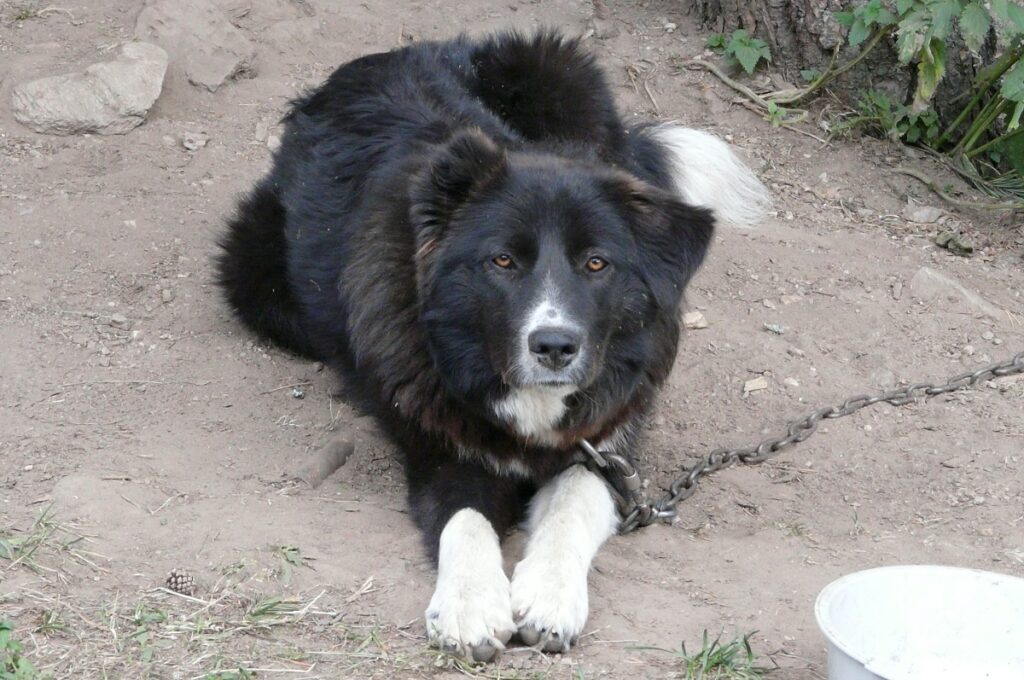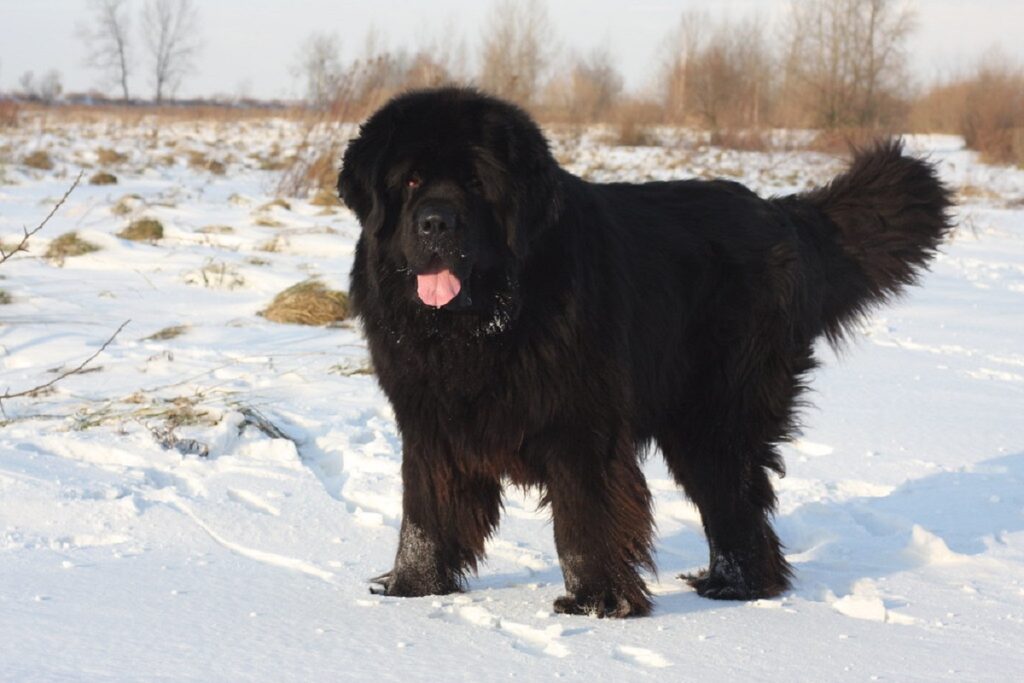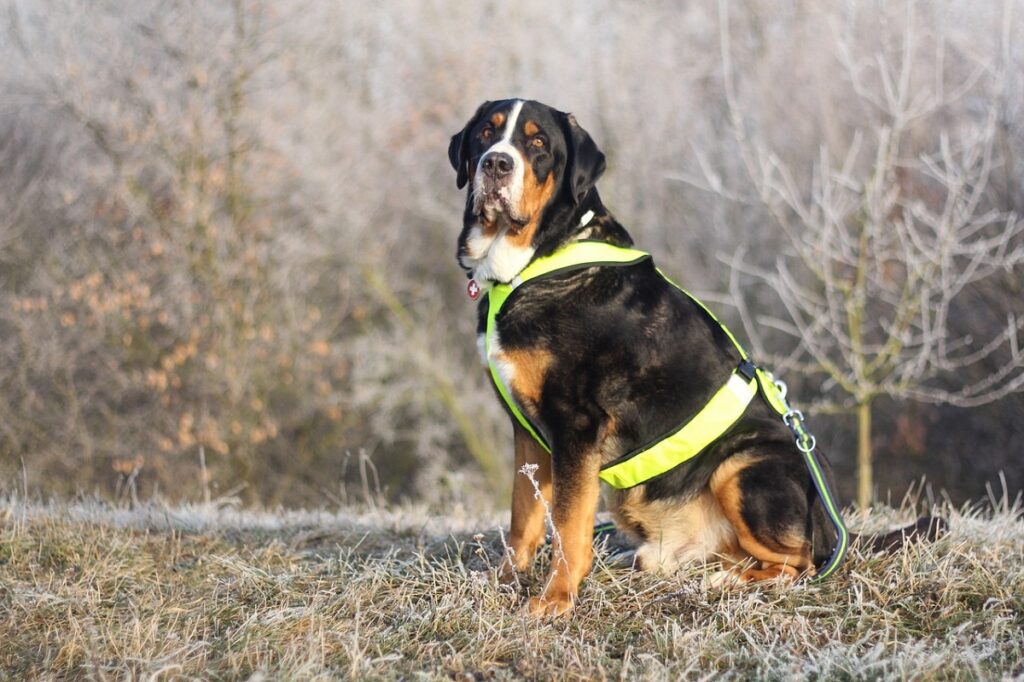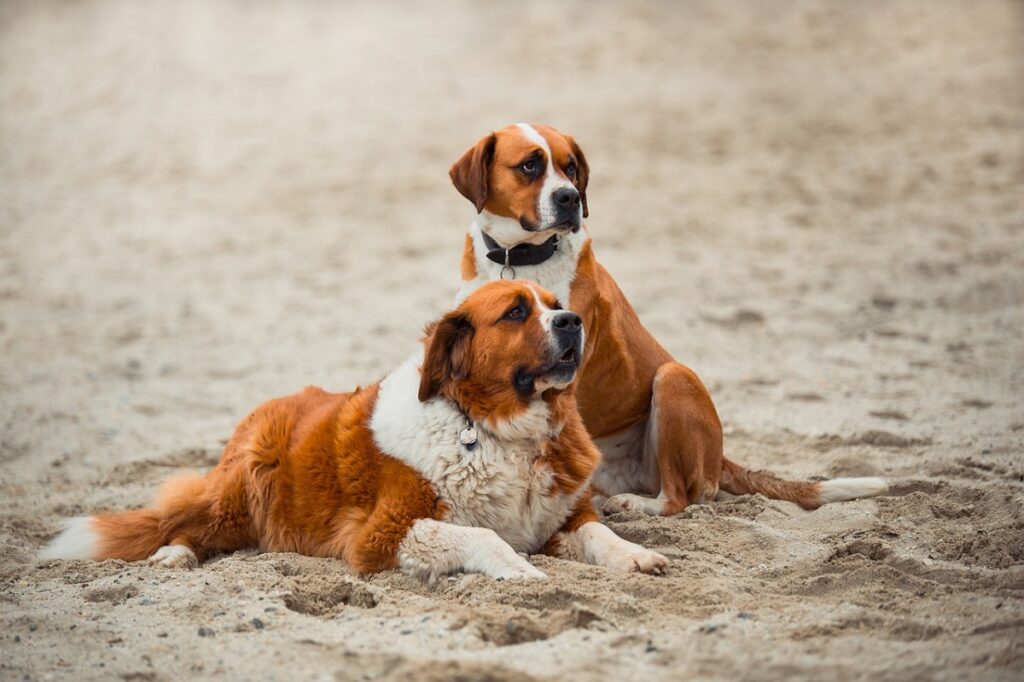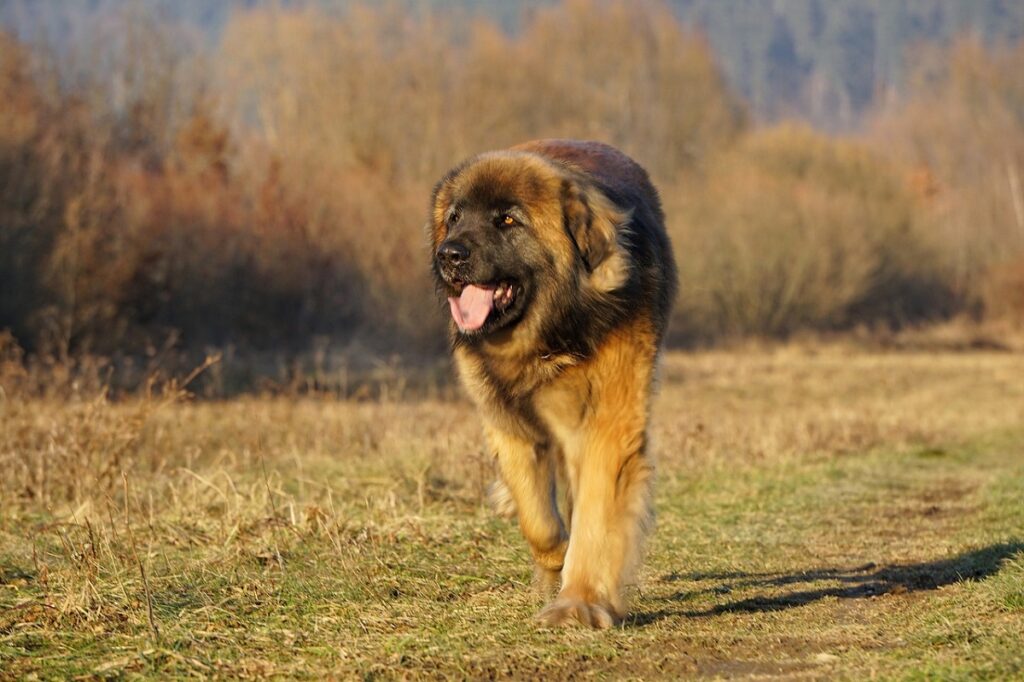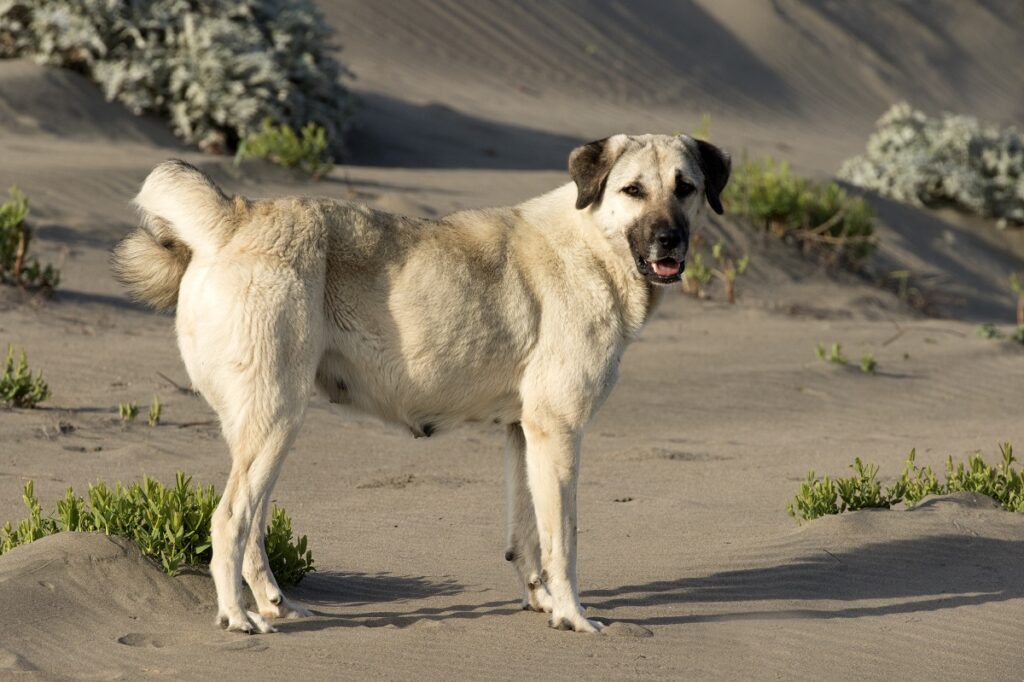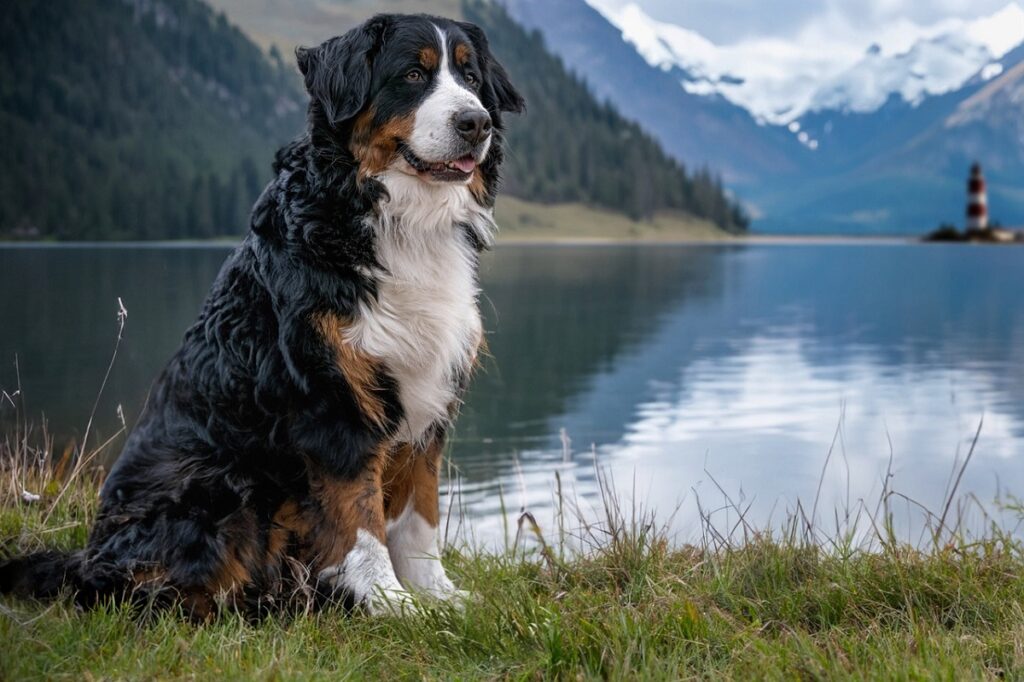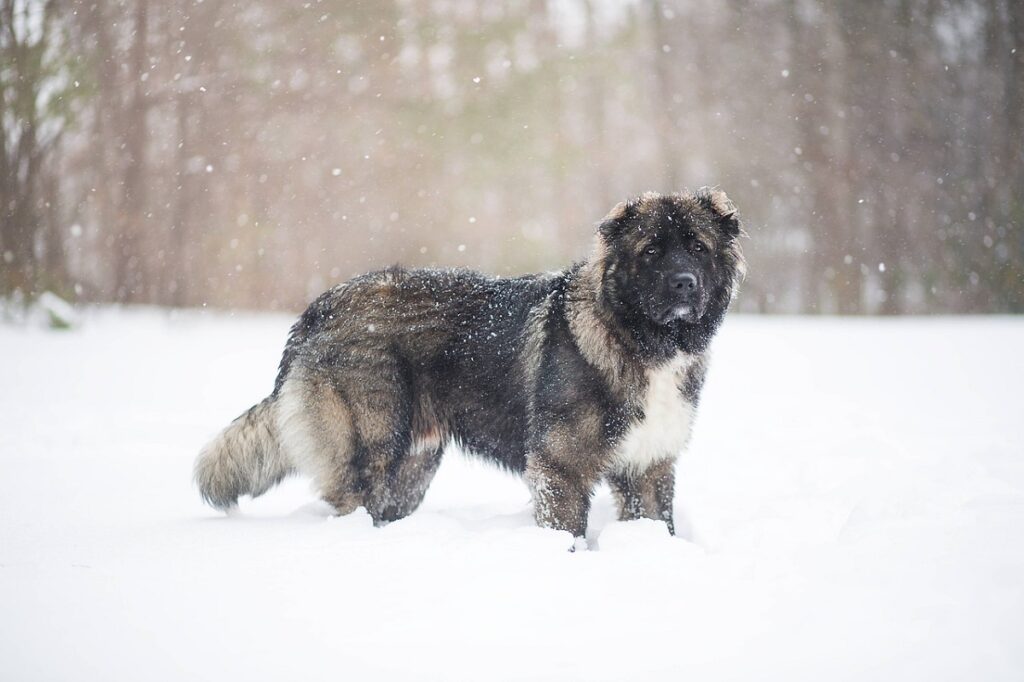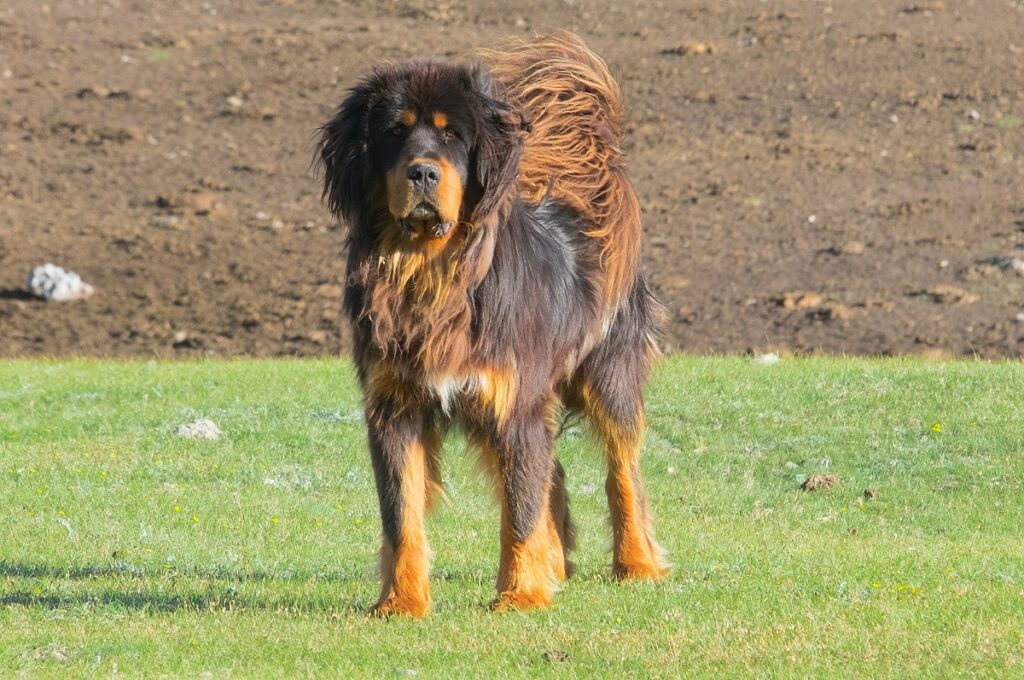From the snowy peaks of the Himalayas to the rugged Alps, certain dog breeds have evolved not just to survive, but thrive in mountainous terrains. These aren’t just fluffy companions; they’re powerful, intelligent, and fiercely loyal animals shaped by altitude and attitude. Join us as we explore the top 13 mountain dog breeds, uncovering their fascinating history, unique characteristics, and what makes them perfectly adapted for a life amongst the clouds. This list celebrates the enduring spirit of these magnificent canines, proving that sometimes, the best view comes with four paws and a wagging tail.
Excuse us, Chihuahuas, Pomeranians, and Maltese, but we’re here to talk about the big guys: Mountain dog breeds. These dogs either originated in or worked in mountainous regions. Think St. Bernard, Bernese mountain dog, and Great Pyrenees.
These medium to large breeds have gone about their days searching, rescuing, pulling, herding, and guarding for centuries. They’ve protected land and people and pulled resources across thousands of miles of sometimes uncharted territory.
Mountain dogs aren’t all necessarily huge, as some would think, but even the medium-sized ones are formidable. Their double coats insulate them well from the harsh weather conditions they often work or play in. These breeds are the hardest of workers while at the same time being incredible companions.
It’s time to break it down about mountain dog breeds. Drum roll, please…
Reasons for Breeding Dogs for Mountainous Regions
- Guard and/or herd livestock
- Pull carts, sleds, wagons, etc.
- Protect shepherds, guardians, athletes (climbers), etc.
- Search and rescue
- Companionship
Unique Mountain Breeds Characteristics
- Medium to large in size
- Protective/Guarding instincts
- Powerful
- Double-coated
- Calm temperament
- Agile
- Well-balanced
- Intelligent
- Working
- Fearless
Mountain Dog Breeds
When it comes to scaling peaks and paw-trolling valleys, these popular mountain dog breeds are the ultimate summit sidekicks!
1. Appenzeller Sennenhund
| Group | Foundation stock service |
| Height | 20”-22” |
| Weight | 48-70 lbs. |
| Fur & color | Double-coated; Black, brown, & white (multicolor) |
| Lifespan | 13-15 yrs. |
| Place of origin | Appenzell region of Switzerland |
The Appenzell cattle dog is a herder and a guardian, and these dogs know how to bark. A lot. It was imperative for them to do their jobs. They were also used as draft dogs (pulling carts or wagons) and had other duties around the farm.
The Appenzeller Sennenhund got their first name from the region they originated in, and “Sennenhund” refers to the “Senn” herders who were in the Appenzell region. For over 100 years, these mountain dogs have been recognized in Europe but are generally foreign to places like the US.
The Appenzeller mountain dog is muscular, intelligent, and reliable and a force to be reckoned with when they’re working.
The Appenzeller’s head and body shape sets it apart from other Swiss cattle dogs. Incredibly quick and self-assured, this Spitz-type dog probably isn’t the best for a first-time or inexperienced guardian. They need plenty of room to roam, and a farm would be the perfect place for them.
2. Entlebucher Mountain Dog
| Group | Herding |
| Height | 16”-21” |
| Weight | 40-65 lbs. |
| Fur & color | Thick double-coat – Black; Black, white, & tan; Black, white, & yellow |
| Lifespan | 11-13 yrs. |
| Place of origin | Switzerland |
This mountain dog is strong, territorial, and confident and not for a home with small children. Not because they’re dangerous but because they’re rambunctious and could easily knock them over. Remember, an Entlebucher mountain dog standing is almost 2 feet tall.
They’re wary of strangers and, with that deep bark of theirs, can scare them off unless they have extensive socialization at a young age. If you’re looking for an incredible watchdog, count them in since they’re good family pets.
The Entlebucher mountain dog is the smallest of the four Swiss mountain dog breeds, with the others being: the Bernese, Appenzeller, and greater Swiss mountain dog.
3. Great Pyrenees
| Group | Working |
| Height | 25”-32” |
| Weight | 85+ lbs. (females); 100+ lbs. (males) |
| Fur & color | Double-coated – White |
| Lifespan | 10-12 yrs. |
| Place of origin | Pyrenean mountains of France |
This mountain dog, a familiar breed to most, is downright loving and gentle and shows that towards its guardians and their young children. They even nurture small animals. The Pyr breed needs his family. He’s called the Pyrenean mountain dog in places outside of North America, and his fame extends throughout the world.
Today, Pyrs are companion animals, although some still guard their flocks on farms. Most are known as barkers, especially at night, so they need to be where neighbors aren’t on top of each other. They’re known for being good-natured but can be aloof with strangers.
Today, many Great Pyrenees are general farm dogs, livestock guardian dog, and companion animals. Pyrs are true family dogs who know how to get along with their loved ones.
4. Karakachan Bear Dog
| Group | Livestock guardian |
| Height | 25”-30” |
| Weight | 88-135 lbs. |
| Fur & color | Double-coated – Black with white markings, white with black markings, brown, brindle |
| Lifespan | 12-14 yrs. |
| Place of origin | Bulgaria |
Also known as the Bulgarian shepherd dog, this mountain dog breed was originally bred with the ancient Thracians and has been around for thousands of years. Up until WWII, they were used in the Bulgarian army.
This stocky livestock guardian breed is agile and works in challenging conditions like rough terrain and places where there are many predators. They guard pets, the land/farm, and guardians, so they’re busy. Extremely intelligent and independent, they’ll warn guardians of any threat and then move the flock to a safer area all on their own.
5. Newfoundland
| Group | Working |
| Height | 26”-28” |
| Weight | 100-150 |
| Fur & color | Double-coated – Black, brown, white & black, gray, beige, black & tan, white & brown |
| Lifespan | 9-10 yrs. |
| Place of origin | Island of Newfoundland off the East Coast of Canada |
The Newfie’s origin story is shrouded in mystery, but this mountain dog breed may have been developed by the Algonquin and Sioux Indians. They were bred for hauling and carting fishermen’s nets, wood, and other various things.
Maybe Newfoundland’s most famous, important job is as water rescue dogs, which they still work at tirelessly.
With webbed feet and the strength of a grown man, if not stronger, they’ve saved countless lives throughout history. The American Kennel Club (AKC) says:What the Saint Bernard is to the Alps, the Newfoundland is to the icy waters of the North Atlantic.
6. Greater Swiss Mountain Dog
| Group | Working |
| Height | 23”-29” |
| Weight | 85-140 lbs. |
| Fur & color | Double-coated – Black, white, & red; Red & white; Blue white & tan |
| Lifespan | 8-11 yrs. |
| Place of origin | Switzerland |
This working dog breed shares the size and strength of ancient mastiffs and, paradoxically, is as gentle as he is tough. The kind-natured dog is one of the four Swiss mountain dogs. They are the oldest and the largest of these breeds.
The Swissies’ ancestors were brought to the Swiss Alps by the Romans and, over time, were bred with regional dogs to create the four Swiss dog breeds.
Great with children and other family members, the greater Swiss mountain dog must have a job since it has been engrained and enjoys carrying and pulling things. These massive, strong, and agile dogs require moderate exercise and are, like most mountain dogs, fiercely protective of their guardians.
7. Saint Bernard
| Group | Working |
| Height | 26”-30” |
| Weight | 120-180 lbs. |
| Fur & color | Double-coated – 9 possible color combinations, all mixed with white |
| Lifespan | 8-10 yrs. |
| Place of origin | Switzerland |
St. Bernards was developed by monks in the 1600s at the St. Bernard Monastery and Hospice in Switzerland, which is now a hospice and hostel for travelers. This search and rescue mountain dog breed has saved hundreds of people from certain death on the treacherous slopes of the Swiss Alps.
“Gentle giant” may be an overused phrase, but it certainly describes this breed. They’re calm and easy-going and only require a couple of short walks daily.
This mountain rescue breed became popular in the US after the movie release about a St. Bernard named Beethoven. Now, these rescue dogs have a place to call home with the right family.
8. Leonberger
| Group | Working |
| Height | 25”-32” |
| Weight | 90-170 lbs. |
| Fur & color | Double-coated – Yellow, red, reddish brown, sandy |
| Lifespan | 7 yrs. |
| Place of origin | Germany |
In the 1800s, Heinrich Essig, a businessman and animal trader, developed the breed and, with his marketing skills, managed to grow their popularity in royal and celebrity circles. He lived in Leonberg, a town in southern Germany. The dogs made it to America but disappeared during the Depression.
Their comeback happened between 1975 and 1985 when five families brought Leonbergers to the US; however, they’re still not as well known in the States as they are in Europe.
The Leonberger is one of the most striking examples of sexually dimorphic dog breeds, with males and females showcasing distinct physical differences.
Characteristics of the Leonberger:
- Gentle
- Even-tempered
- Confident
- Playful
- Versatile
- Excellent swimmers
- Loves children
- Working dogs on farms and waterfronts
- Specialty – Cart pulling
9. Anatolian Shepherd
| Group | Working |
| Height | 27”-29” |
| Weight | 80-150 lbs. |
| Fur & color | Double-coated – Biscuit & white, brindle, fawn, blue fawn, gray fawn, red fawn, liver, white |
| Lifespan | 11-13 yrs. |
| Place of origin | Anatolia, or Asia Minor, in the Asian portion of Turkey |
Anatolian shepherds are an ancient breed, and some say they go all the way back to biblical times. Shepherds needed their livestock protected, an age-old problem, and eventually, this breed was developed.
Over the centuries, a shepherd’s specific needs with flock protection helped them choose their breeding stock. The Anatolian mountain dog breed met the challenge since they were chosen/developed for their courage, intelligence, ruggedness, and instincts.
They’re known as Molosser-types, which means they have wide chests, large stature, and muscled legs. And these big dogs are fast. Quite the specimen.
10. Bernese Mountain Dog
| Group | Working |
| Height | 23”-28” |
| Weight | 70-115 lbs. |
| Fur & color | Double-coated – Black, rust, & white; Black, tan, & white; Black & rust; Black & white; Rust & white |
| Lifespan | 7-10 yrs. |
| Place of origin | Switzerland |
This mountain dog breed drove cattle, guarded farms from predators, and pulled carts. They were developed near Berne and eventually came to America, where the AKC registered the Bernese mountain dogs in 1937.
With stunning looks and an affectionate nature, they’re solid and reliable dogs as companions and have won many awards at the Westminster Dog Show.
The Bernese mountain dog is the only one of the four mountain dog breeds that have a long coat, and their powerful legs have made them popular as the dog who can pull many times its own weight.
11. Caucasian Shepherd Dog
| Group | Foundation stock service |
| Height | 23”-30” |
| Weight | 99-170 lbs. |
| Fur & color | Double-coated – 10 possible colors or color mixtures |
| Lifespan | 10-12 yrs. |
| Place of origin | Caucasus mountain range between Europe and Asia |
The Caucasian shepherd dog was developed to protect and are tops at herding livestock. They are quite protective and are fierce when guarding their people or property. Also called the Caucasian Ovcharka, this shepherd breed is independent, friendly, and gentle and makes wonderful family pets.
Due to the size of this incredible animal, they’ll need a guardian with a firm hand (read: using positive reinforcement) and an alpha personality.
12. Kuvasz
| Group | Working |
| Height | 26”-30” |
| Weight | 70-115 lbs. |
| Fur & color | Double-coated – White |
| Lifespan | Double-coated – White |
| Place of origin | Hungary |
Don’t let the looks of this dog’s fluffy white coat fool you. This dog is a workhorse. According to stud records for this breed, they’ve been around since the 15th century and were bred as guardians and hunters.
Although they’re loyal family dogs, always supervise them around children (as with any other dog), and they may not be so friendly with other dogs and cats unless they’re socialized and trained early.
Today, they’re flock guardians, and their white coats are to disguise them from predators since they can blend in with the sheep. Families adore this dog as a family pet.
13. Tibetan Mastiff
| Group | Working |
| Height | 24”-26” |
| Weight | 70-150 lbs |
| Fur & color | Double-coated – 10 possible colors or color mixtures |
| Lifespan | 10-12 yrs. |
| Place of origin | Tibet |
Tibetan mastiffs may be the most impressive on this list, with looks that resemble a lion. To say they are large dogs with a thick coat is putting it mildly. These mastiffs are descendants of hunting dogs of nomadic tribes in Tibet and Asia.
According to the New York Post, a Chinese businessman paid $1.9 million for a Tibetan mastiff. That’s a chunk of change. Owners of the breed say they’re extremely loyal and protective.
They could take or leave unfamiliar people and have an imposing presence but are gentle and loving with their human families.
Breeds to Avoid
Mountain dog breeds that could accompany you on a wintry trip include dogs with double coats that can brave the temperatures and terrain. Your best bet is to steer clear of single-coated breeds and smaller dogs, and there are many.
FAQs
What Are the 4 Types of Swiss Mountain Dogs?
Four breeds of Swiss mountain dogs:
- Greater Swiss
- Bernese
- Appenzell
- Entlebucher
Do Dogs Live on Mountains?
Yes, and they’re bred to withstand inclement weather conditions in mountain regions. (Although you should always keep them indoors unless you’re hiking or going to be outdoors for other reasons. Small- and medium-sized dogs also live there but primarily live indoors.)
Are Mountain Dogs Good Pets?
With consistent positive reinforcement training and early socialization, mountain dog breeds make excellent pets.
Final Thoughts
So, are you ready for big dog ownership? Mountain dog breeds are exceptional dogs and ones who always need extensive training and lots of affection. They’re absolutely not for everyone, but you just might be the perfect guardian if you take all this information into consideration.
You’ll need to let them know who’s boss, and if you let them into your bed, all bets are off for who sleeps on the floor.
Mountain dog breeds are truly remarkable, sculpted by the challenging environments they originate from. Their thick coats, powerful builds, and unwavering loyalty reflect their history as guardians and companions in high altitudes. From the majestic Bernese Mountain Dog to the playful Entlebucher, each breed boasts unique traits, yet they all share an inherent resilience and a deep bond with humans. Whether you seek a working dog or a devoted family pet, these mountain breeds offer a distinct combination of strength, intelligence, and affectionate companionship shaped by both altitude and attitude.

